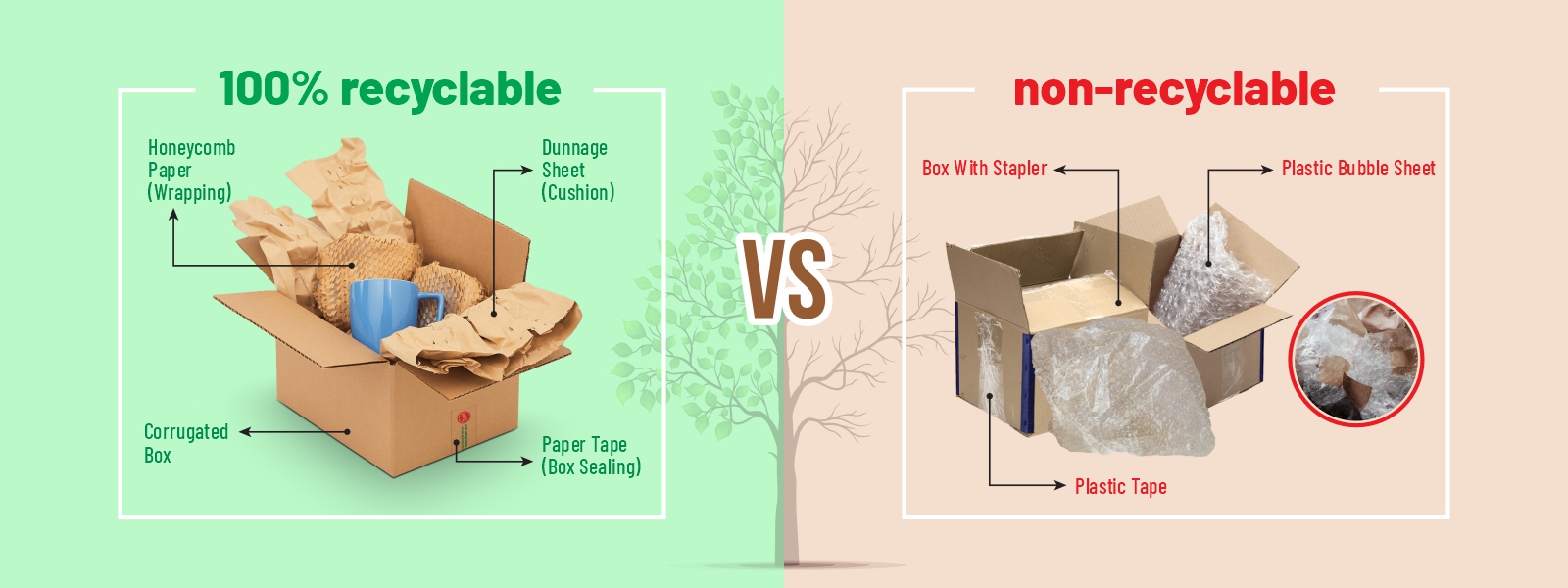
A Comparative Analysis: Eco-friendly Packaging Vs Conventional Packaging
In today's world, where environmental concerns are at the forefront of global discussions, With the rise of eco-conscious consumers and increasing awareness about sustainability, businesses are reevaluating their packaging choices.
The packaging industry is undergoing a significant transformation
Eco-Friendly Packaging:
Eco-friendly packaging, also known as sustainable packaging, prioritizes materials and processes that minimize environmental impact throughout the product life cycle. Key features of eco-friendly packaging include:
- Biodegradability,
- recyclability,
- and the use of renewable resources.
One of the most notable materials used in eco-friendly packaging is kraft paper tape. This type of tape is made from natural fibers, making it biodegradable and recyclable. Manufacturers, especially in regions like India, are increasingly producing paper tapes to cater to the demand for sustainable solutions. Paper tape offers comparable strength and durability to conventional plastic tape while being environmentally friendly.
Honeycomb packaging paper is another eco-friendly option gaining popularity. Made from recycled paper, honeycomb packaging provides excellent cushioning and protection for fragile items while reducing reliance on non-renewable resources.
Recycled BOPP tape and Biodegradable BOPP tape are also gaining traction in the market. These tapes offer the same adhesive properties as conventional plastic tape but break down more easily in the environment, reducing pollution and landfill waste.
Overall, eco-friendly packaging aligns with the principles of the circular economy, where materials are reused, recycled, or composted, minimizing the use of virgin resources and reducing waste.
Conventional Packaging:
Conventional packaging, on the other hand, typically relies on plastic materials such as bubble wrap, dunnage paper, and plastic BOPP tape. While these materials also offer effective protection for products during shipping and handling, they pose significant environmental challenges.
Bubble wrap, a popular choice for cushioning, is made from non-biodegradable plastic, contributing to pollution and harming marine life if not disposed of properly.
Comparative Analysis:
When comparing eco-friendly packaging to conventional packaging, several factors come into play:
- Environmental Impact: Eco-friendly packaging significantly reduces the carbon footprint and environmental harm associated with conventional packaging. By using renewable materials and minimizing waste, eco-friendly packaging helps mitigate pollution and conserve natural resources.
- Effectiveness: While conventional packaging offer good reliability, advancements in eco-friendly materials now provide similar if not superior assurance. Eco-friendly packaging solutions like kraft paper tape and honeycomb packaging paper provide adequate protection for most products while offering superior sustainability benefits.
- Market Trends: Consumer preferences are shifting towards eco-friendly products, driving demand for sustainable packaging solutions. Businesses that embrace eco-friendly packaging not only reduce their environmental impact but also appeal to a growing market segment of eco-conscious consumers.
In conclusion, the choice between eco-friendly packaging and conventional packaging ultimately depends on a company's commitment to sustainability and its willingness to adapt to changing market trends. While conventional packaging may offer short-term benefits in terms of cost and convenience, the long-term advantages of eco-friendly packaging in terms of environmental stewardship and consumer appeal cannot be ignored. As the demand for sustainable solutions continues to grow, businesses that prioritize eco-friendly packaging stand to gain a competitive edge in the market.